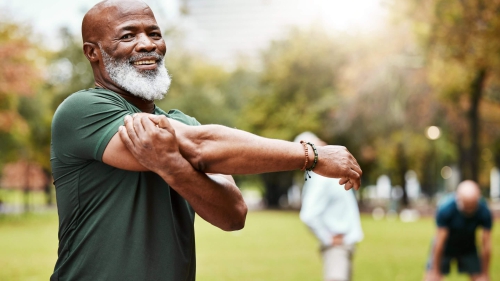When It’s Not Just a Bad Mood

Ever feel like you're under a permanent gray cloud or that your get-up-and-go has gotten up and disappeared? If you have, especially while battling our global pandemic, you aren't alone. Sadness and grief are perfectly natural responses to disappointment, loss, trauma, tragedy, or bereavement. However, when these feelings morph into lengthy periods of inordinate sadness, it is time to call it what it is: depression. It is news to many that half of all mental health conditions start by 14 years of age, but most cases are undetected and untreated. Furthermore, according to data from the CDC, suicide is the second leading cause of death among ages 15-24 in the U.S.
While that is the reality, equally common is adults wondering what kids could possibly have to be sad or worried about. They may even contend that “they are doing it for attention or being manipulative. Let’s just ignore it.” The fact is that mood disorders cross boundaries of age, gender, race, socioeconomics, ethnicity, nationality, and orientation. That said, the Mayo Clinic notes that men are half as likely as women to be diagnosed with depression.
Depression is one of five overarching types of mood disorders, says Dr. Nida Hussain, Clinical & Health Psychologist, PsyD, and CEO of Mindful Baking. Mood disorders include major depression, dysthymia (dysthymic disorder) or chronic depression, bipolar disorder, mood disorders related to health conditions, and substance-induced mood disorders. Major depression is among the most common mental illnesses, she says.
According to the article “Recognizing and Getting Help for Mood Disorders” by Johns Hopkins Medicine, major depression is “characterized as having less than normal interest in regular activities and lacking energy and focus for at least two weeks.” Alternatively, chronic depression presents as “a low-grade…irritable mood lasting for at least two years.” Post-partum depression is another type. Moms of newborns may find that elation and joy are elusive. The Edinburgh Postnatal Depression Scale is a handy checklist easily found online that can provide a quick screening for post-natal depression. You should speak to a doctor if your results worry you.
Symptoms of Depression
Mood disorders creep up on you rather than materialize suddenly. In fact, according to the Johns Hopkins Medicine article cited above, "fewer than 50 percent of depressed women even saw themselves as sad." You cannot treat what you don't know you have. To know when to visit a doctor, watch for the following symptoms: extended irritability, aggression, or hostility; a perpetual sad, empty, or anxious feeling; flagging focus; and/or changes in appetite, weight, or sleep patterns. When any combination of these symptoms becomes your new normal, it is time to make an appointment.
Mood disorders aren’t just triggered by chemical imbalances in the brain. They can be rooted in environmental stressors and even genetics, among other factors. However, “it is important to remember that there is no pure formula to mood disorders. You can have two people in the same exact situation, but have one person who develops depression and another who does not,” says Dr. Hussain. “The presentation may also differ as certain cultures and religions have higher reports of psychosomatic physical symptoms as manifestations of their mental distress. Common physical symptoms reported include, but are not limited to: headaches, backaches, shoulder pain, migraines, and gastro related symptoms. Again, it is important to look at mental health concerns with a holistic lens, rather than in isolation.”
Treatment Options
There are several approaches to treatment. Still, what works for one person can be ineffective for another. There is cognitive behavioral therapy (CBT), which involves talk therapy, arming oneself with coping strategies, and nipping counterproductive habits, including mental chatter, in the bud. Our temperament shapes our behavior and our reactions to the world. Therapists help us gain awareness of our temperament and identify our stressors and typical responses to triggers. They help us modify our reactions to mitigate the damage to our brain, body, and relationships. While CBT may suffice for some, others may also need antidepressants. A full dose of medication may take as many as eight weeks before a person will see benefits.
“Many people need more than a short-term treatment like CBT and medications,” says Dr. Linda L. Michaels, PsyD, MBA, and Co-Chair of the Psychotherapy Action Network (PsiAN). “Those who want or need an individualized therapy experience, that really gets at the root of their issues, can seek out depth therapy—often called psychoanalytic. There is a robust evidence base showing that, even though this kind of therapy can take longer, the results last longer. Thus, it's an excellent investment in oneself, for the long term.”
Teach Yourself (and Your Kids) to Breathe
Stress is one of many triggers for depression, and research shows that deep-belly breathing and mindfulness are antidotes to stress. Breathing deeply sends our hunter-gatherer brain the message that there is no danger in sight and that the coast is clear. These practices foster mental health and even address mood disorders. The study “Randomized Controlled Trial of Mindfulness Versus Yoga: Effects on Depression and/or Anxiety in College Students” by Nasrin Falsafi is one of several studies with results offering “implications for a cost-effective treatment for depression and anxiety.”
Mindfulness and breathing curriculums are being introduced to grades K-12 across the U.S. These practices are to the brain (and mental health, social relationships, and cognition) what drinking water, exercise, and healthy eating are to the body. Just as we teach our children healthy eating habits, instilling mindfulness and deep breathing habits helps them build resilience. According to Katherine Weare in a report for the Mindfulness in Schools Project, “[m]indfulness has also clearly been shown to be effective in improving mental health too, addressing problems such as substance abuse, stress, anxiety and recurrent depression, and to improve sleep..."
Alphabreaths by Chris Willard and Breathe with Me by Mariam Gates are some picture books and YouTube videos to help your youngest get started. You can choose from a plethora of deep breathing exercises and will notice the difference within weeks if you practice regularly. One technique is the 7-11 breathing method:
- While sitting or lying down, take a deep, slow breath, filling your belly. Silently count to seven as you inhale.
- Hold your breath, silently counting to three.
- Breathe out completely, silently counting to eleven. Try to get all the air out of your lungs.
- Repeat ten times thrice a day or until you feel calm.
- Remember to keep the exhale longer than the inhale so as to maximize the impact and relaxation. According to Roderik J. S. Gerritsen and Guido P. H. Band in their article “Breath of Life: The Respiratory Vagal Stimulation Model of Contemplative Activity,” this creates “a state of relaxation by VN [vagus nerve], resulting in more VN activity and further relaxation.”
Make an Appointment with Nature!
Being in green spaces does wonders for mental health among adults and children. According to Kathleen Wolf and Katrina Flora in their article for Green Cities: Good Health, “outdoor activities can help alleviate symptoms of Alzheimers, dementia, stress, and depression, and improve cognitive function in those recently diagnosed with breast cancer.” “Green time” has even been seen as an effective supplement to traditional medicines and behavioral treatments in tackling childhood ADD. Based on the aforementioned article, children who spend time in nature play better with their peers, are more creative, imaginative, earn better grades and are better at impulse control. When we make time in nature a common element of our life and our kids’ lives, we are equipping ourselves to fend off depression and anxiety. Nature is relatively accessible to most and can be a first line of defense against mental illness.
Further, nature combined with physical activity is even more helpful. “Physical activity also stimulates the release of dopamine, norepinephrine, and serotonin. These brain chemicals play an important part in regulating your mood. For example, regular exercise can positively impact serotonin levels in your brain,” says Ryan Collins in a July 2017 article for Healthline.
There Is an App for It!
According to Kira Herzog’s article for CNBC, in 2020 the American Psychological Association (APA) cited 20,000 mental health apps “from AI chatbots and mood trackers, to services like Talkspace and BetterHelp that connect patients with licensed therapists.” The apps claimed to help those with depression, eating disorder recovery, anxiety, PTSD, and obsessive-compulsive disorder. They help track mood symptoms, offer “therapy inspired exercises and lessons” (according to the App Advisor from the American Psychiatric Association) and provide easier access to therapists, especially if you do not have insurance. What’s not to like?
Firstly, professional therapists bemoan the fact that it could be life coaches rather than licensed therapists on the other side of your screen. “It’s all the more troubling that many of these 'therapy-ish' companies are becoming legitimized mental health offerings, taking the place of experienced professionals,” says Dr. Michaels. “PsiAN did reach out to licensing boards when we started to have concerns about texting companies that were selling asynchronous text services and calling it therapy…We had concerns about ethics, confidentiality and boundary issues, and more.”
Just as importantly, Dr. Michaels asks, “How secure is your private information? Is your data safe online? Is what is discussed with a life coach or e-therapist governed by HIPAA-like laws that mandate confidentiality?” Dr. Michaels also says that most apps have yet to conduct peer-reviewed research to support their claims. Going by the number of stars different apps have earned, the jury is still out as to their efficacy.
Therapy Is Good Medicine
Oftentimes when it comes to our emotional wellbeing, we rely on home remedies, more sleep, prayer, or talking with a friend. Exercise, because it helps the body produce endorphins that makes us feel good, is another common go-to. While these are great starting points, just as no one would address cancer, a broken bone, or bad acne with just home remedies, addressing persistent mental health and emotional issues requires expert input. Prayer and patience should complement expert care rather than replace it.
“When seeking out treatment, it is important to be open with your psychologist, therapist, [or] counselor about what you are looking for out of therapy,” says Dr. Hussain. “The main goal is helping [clients] function in a meaningful way with regards to themselves, others, and/or the world around them. The length of time and the results vary from person to person but, overall, studies consistently show a positive correlation between symptom reduction and participation in therapy, as compared to those who do not receive any therapy. In some cases, medication [when it’s called for] and therapy combined [have] the best results.”
Prayer is great medicine, so let’s keep up with it. Let’s persevere with patience and an attitude of gratitude. Let us make green time and deep breathing daily habits. Let’s live with hope. But just as importantly, when it comes to our mental, physical, and emotional well-being, let’s not stop there. Seeking therapy and medication, when needed, fully align with Islamic teachings.
Naazish YarKhan is a college essay consultant ( www.writersstudio.us) and marketing communications strategist. Her writing has been published in over fifty media outlets internationally including NPR, the Chicago Tribune, and PRI.
Reprinted from the Spring 2020 issue of Halal Consumer© magazine with permission from the Islamic Food and Nutrition Council of America (IFANCA®) and Halal Consumer© magazine.

















